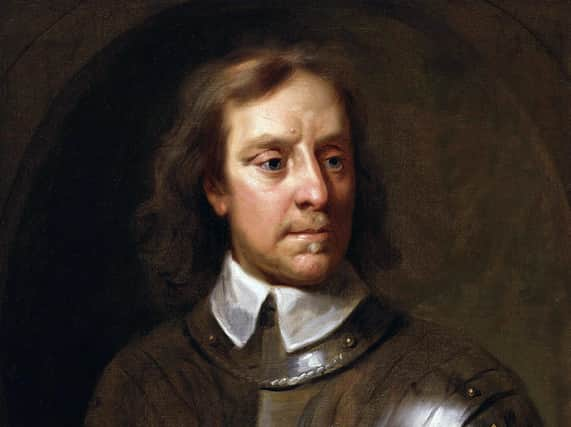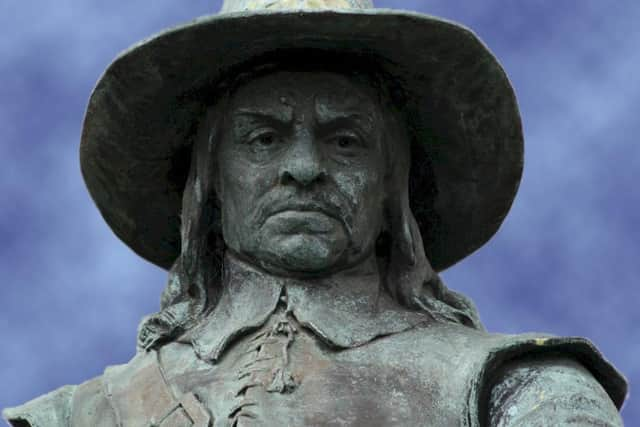The strange story of how Oliver Cromwell's head was owned by a Kettering doctor


Oliver Cromwell's head once belonged to a Kettering doctor before it was finally reburied in 1960, three centuries after his body was dug up and beheaded.
The strange story is not commonly known, but when Cromwell's body was dug up in 1660 after the restoration of the monarchy, his head was cut off and put on display.
Advertisement
Hide AdAdvertisement
Hide AdIt eventually became a collector's item and found itself in the possession of a Kettering doctor, Dr Horace Wilkinson, in 1957.


Cromwell's story begins back in 1599, when he was born in nearby Huntingdon, according to the Cromwell Museum. He led the Parliamentary armies in the Civil Wars against King Charles I and the Royalists and even fought a battle in Northamptonshire.
It is thought that Cromwell stayed in The Hind Hotel in Wellingborough before the Battle of Naseby in June 1645, when his armies decisively beat the Royalists.
The Parliamentarians won the Civil War and overthrew Charles I, who was executed on January 30, 1649 and Cromwell became Lord Protector, the first commoner head of state.
Advertisement
Hide AdAdvertisement
Hide AdCromwell ruled until his death from natural causes on September 3, 1658 and he was buried in Westminster Abbey. The strange story of his head begins in 1660, when the monarchy was restored.
Charles I's son, Charles II, became king and Cromwell's body was dug up, hung in chains, and beheaded on the anniversary of Charles I's execution as a warning against Republicanism.
According to the Fitzwilliam Museum, Cromwell's head was put on a spike and displayed for more than 20 years but it then disappeared.
Almost a century later, Cromwell's head resurfaced as a grisly collector's item. The Fitzwilliam Museum describes how Cromwell's head passed hands in 1781 for £180 and later for £230.
Advertisement
Hide AdAdvertisement
Hide AdIn 1814, the head was owned by Josiah Henry Wilkinson and it remained in the family for over 100 years until it was finally reburied.
According to the LA Times, the Wilkinson family liked to show off Cromwell's head after breakfast to house guests.
We know that the Wilkinson family's head is definitely that of Cromwell's because in 1935, it's then-owner, Canon Horace Wilkinson, allowed it to be tested by scientists.
The LA Times reported that contemporary records showed Cromwell's body was 'overcharged' in 1658 after his death, which suggested his skullcap was removed. His body was also embalmed.
Advertisement
Hide AdAdvertisement
Hide AdThe experts that examined the Wilkinson family's head showed the skullcap had indeed been removed, embalmed and later decapitated.
Given how rare it would be for a body to be decapitated after death, in combination with the other features, experts established that it must be Cromwell's head and that to forge such a convincing replica would be almost impossible.
Despite the historic value of Cromwell's head, Canon Horace Wilkinson insisted it would remain in the family and told a newspaper in 1949 that he would not give it up.
A report in The Northern Times from July 28, 1949, said: "When 30 relics of Oliver Cromwell - including the broad brimmed hat he wore when he dissolved the Long Parliament - were handed over to Viscount Hinchingbrooke for the Cromwell Association, the greatest of all was missing.
Advertisement
Hide AdAdvertisement
Hide Ad"This was the head of Cromwell himself, which is owned by Canon Horace Wilkinson, of Melton Grove, Pytches-rd., Woodbridge, Suffolk.
"The canon said that his family has had the head of the Protector since 1814."
Canon Wilkinson told the paper: "An ancestor of mine brought it from three men who had been active in the French Revolution. How they came by it, I have no idea."
The Canon was asked if he would present the head to a museum or the state, and he said: "Not likely, I can look after it better than the State. When they had it, they stuck it on a pole."
Advertisement
Hide AdAdvertisement
Hide AdThe head was then inherited by Dr Horace Wilkinson, who was a doctor at KGH according to Time Magazine and Chris Smart, who has written about Dr Wilkinson for The Protector's Pen, a magazine run by The Cromwell Association.
According to Smart, Dr Wilkinson inherited Cromwell's head in 1957 after the death of his father. At the time, the doctor was living in KGH accommodation but moved out to Thorpe Malsor the following year.
Despite his fathers vow to keep the head in the family, Dr Wilkinson was the last owner of Cromwell's head and gave it to the Lord Protector's Cambridge College, Sidney Sussex, in 1960.
The LA Times reported that requests from the press and historical researchers pushed Wilkinson into giving up the head.
Advertisement
Hide AdAdvertisement
Hide AdSo the strange story of how a Kettering doctor came to own the head of Oliver Cromwell came to an end in 1960, nearly three hundred years after Cromwell's head was cut off, when it was reburied in Sidney Sussex's chapel. It's exact location remains a secret.